What Is The Maximum Coldholding Temperature Allowed For Pasta Salad – Similarly, during periods of economic growth, there may be a greater willingness to spend on luxury second-hand items, such as high-end fashion or collectible items. When a business is put up for sale, it is typically the result of a variety of reasons, each unique to the situation at hand. This can bring about feelings of uncertainty, as there’s no guarantee that the right buyer or partner will come along. Whether it’s a rare collectible, a discontinued item, or a vintage piece of clothing, online platforms offer a global marketplace where buyers and sellers can connect over products that may not be easily found elsewhere. Similarly, in relationships, individuals may feel as though they are selling themselves, presenting their best qualities and hoping for the best outcome. When people buy second-hand items, they are extending the life cycle of those goods, which means fewer products end up in the trash. And, in a way, this is the ultimate form of freedom: the ability to buy, sell, and trade on your own terms. Acquiring an established business can provide a head start in terms of customer relationships, operational systems, and brand recognition. Electronics are another category of second-hand goods that have seen a rise in popularity. Selling such an item can be a difficult decision, yet it often represents the practical need to downsize or make space for something new. The concept of a circular economy, where products are reused and repurposed instead of discarded, is central to the appeal of second-hand goods. One of the major environmental concerns with new products is the waste that they often generate at the end of their life cycle. The digital age has also transformed the way things are bought and sold. These acts of generosity remind us that there are still things in life that cannot be bought, cannot be sold, and cannot be quantified. With the rising costs of new products, especially in categories like electronics, clothing, and furniture, purchasing second-hand items can offer significant savings. The process of selling it can be seen as a form of letting go, a recognition that the future may look different from the past, but that doesn’t diminish its importance or value. The concept of quality, however, is not a one-size-fits-all. The growing interest in second-hand goods can also be attributed to shifting cultural attitudes toward consumption. Buying second-hand goods has numerous advantages. Whether it’s the sleek lines of a designer chair or the intricate patterns on a handwoven rug, quality goods are often as much about aesthetics as they are about functionality.
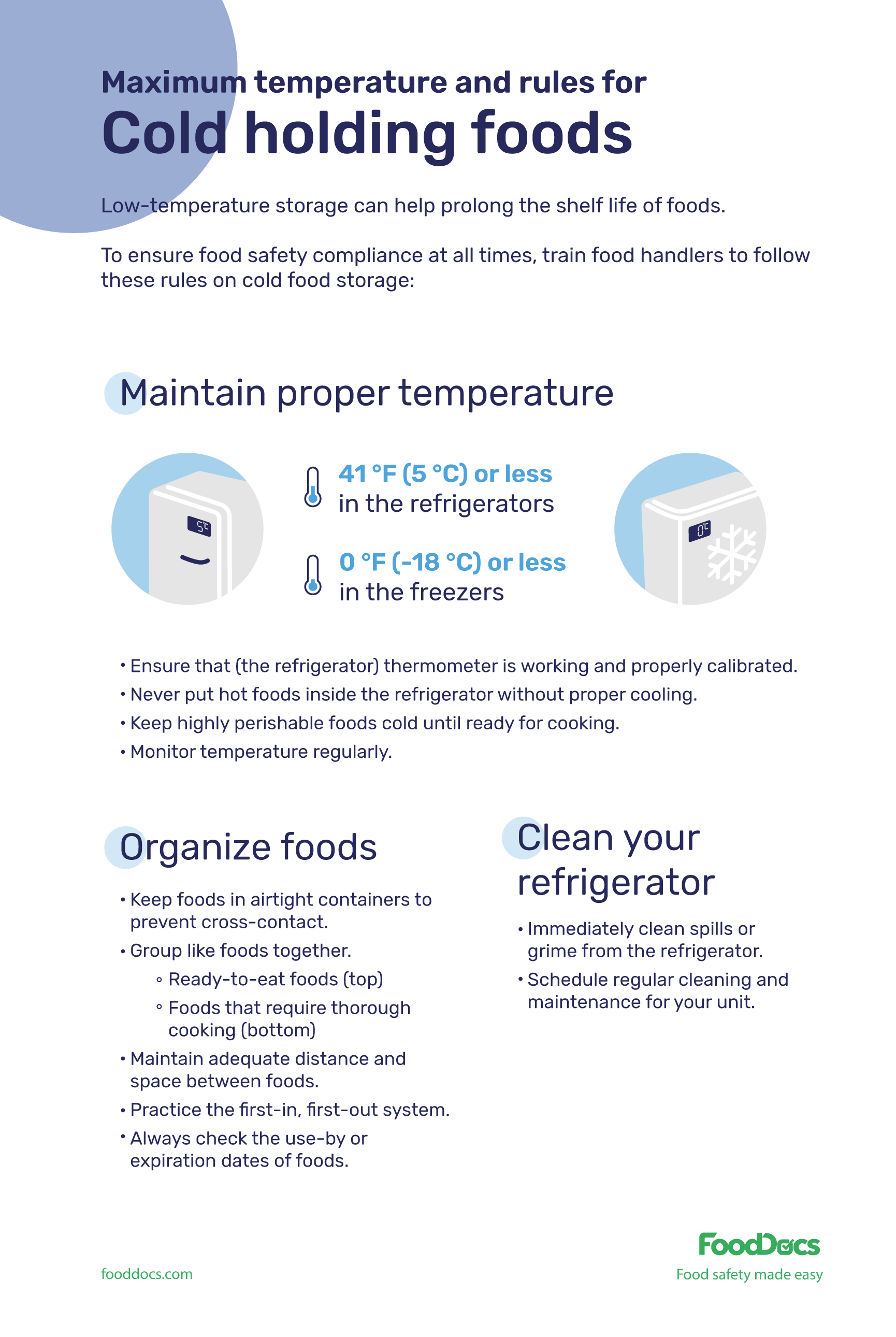
What Is the Maximum Cold Holding Temperature? Temperatures for Specific
Assuming it is stored safely, how long after it was prepared can refrigerated food be sold or served? The maximum cold holding temperature for pasta salad should be 40 degrees fahrenheit (4 degrees celsius). **the maximum cold holding temperature for pasta salad is 41°f (5°c).** pasta salad is a popular dish often served as a side or main course in.
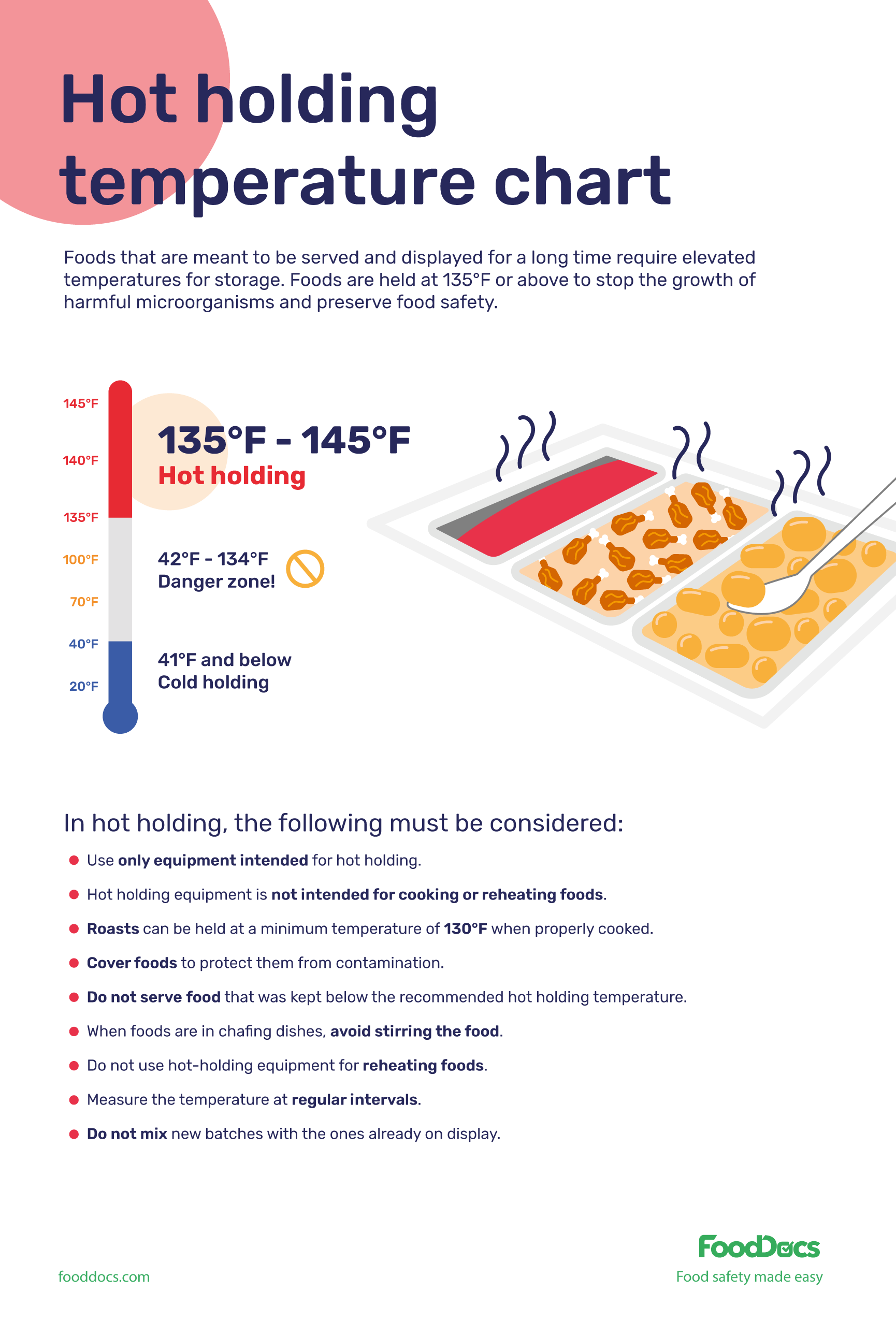
What Is The Maximum Temperature Allowed While Cold Holding This Food?
It is important to store the pasta. Assuming it is stored safely, how long after it was prepared can refrigerated food be sold or served? What is the maximum cold holding temperature for pasta salad? The maximum cold holding temperature allowed for pasta salad in food service settings is 41°f (5°c). Keeping the pasta salad at this temperature or below.
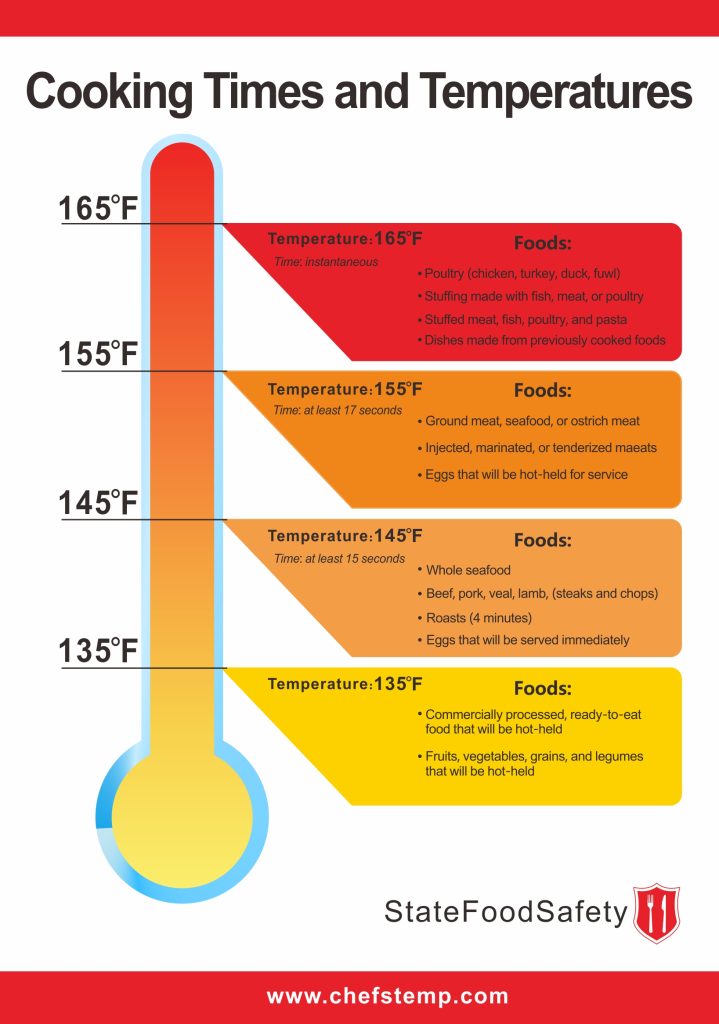
A Guide to Safe and Delicious Cooking Food
This temperature range is important to prevent the growth of. What is cold holding temperature? It is important to store the pasta. Ranchology rewardsavailable nationwidecrafted in the 1950sdozens of products This is the temperature at which bacteria growth slows significantly, helping to prevent foodborne illness.

What is the maximum cold holding time for pasta salad? YouTube
Pasta salad should remain refrigerated in an airtight container at temperatures below 40 degrees. Where should she check the temperature? What is the maximum cold holding temperature for pasta salad? Which symptom must you report to your manager? The maximum cold holding temperature for pasta salad should be 40 degrees fahrenheit (4 degrees celsius).

Maximum Cold Holding Temperature For Pasta Salad Android62
This is because bacteria can grow rapidly in temperatures between 40 and 140. This temperature range is important to prevent the growth of. It is important to store the pasta. This means that it should be kept refrigerated at all times, and should not be left out at room. Which symptom must you report to your manager?

What Is The Maximum Cold Holding Temperature? Remember This
Assuming it is stored safely, how long after it was prepared can refrigerated food be sold or served? This is because bacteria can grow rapidly in temperatures between 40 and 140. Which symptom must you report to your manager? What is cold holding temperature? Reviewseditor's top picksnovember sales 2024ratings
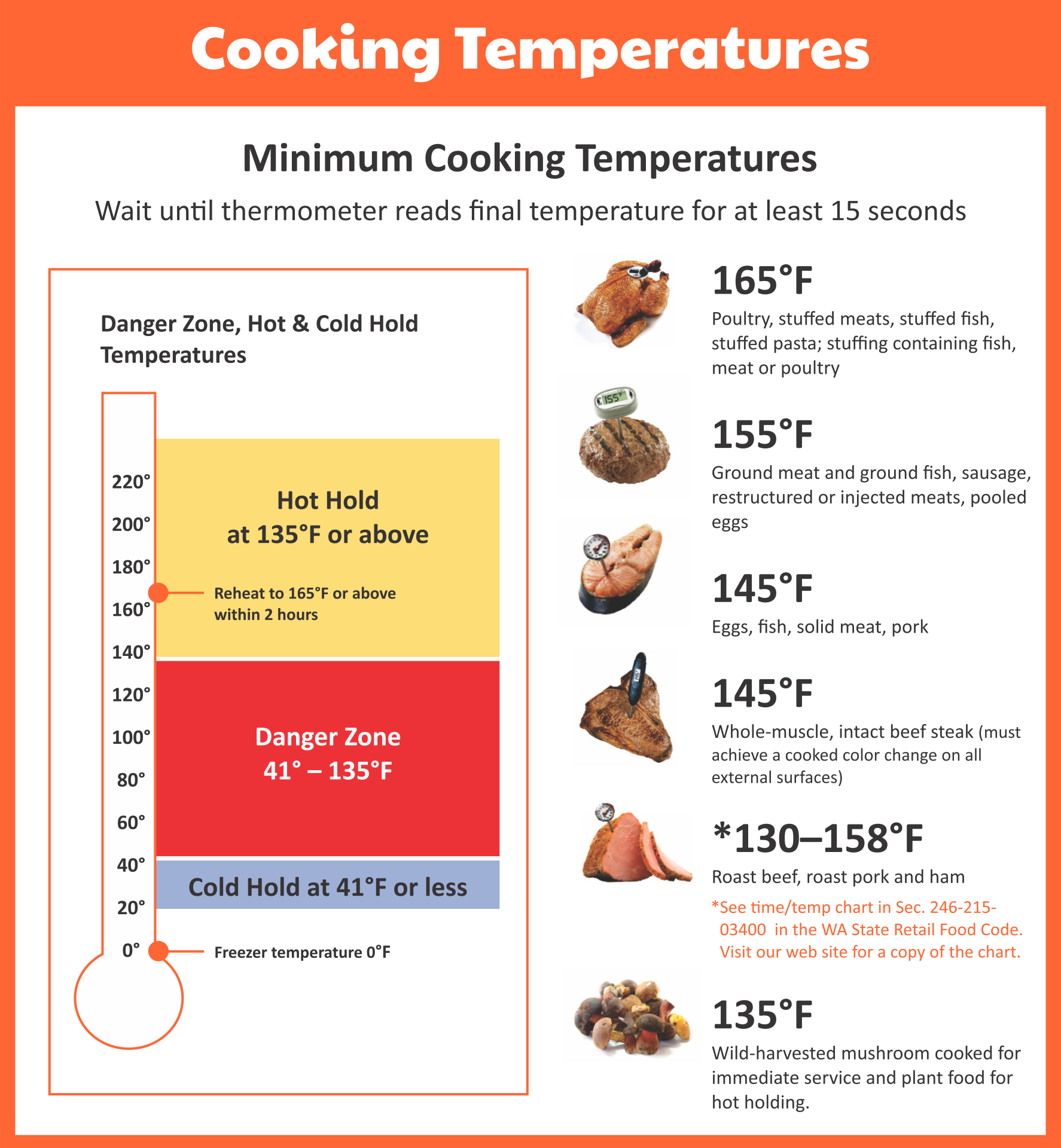
Temperature Scale In Cooking
This is because bacteria can grow rapidly in temperatures between 40 and 140. The maximum cold holding temperature for pasta salad should be 41°f (5°c) or below to prevent bacterial growth and ensure food safety. This is the temperature recommended by health standards across different regions to prevent the. This is the temperature at which bacteria growth slows significantly, helping.
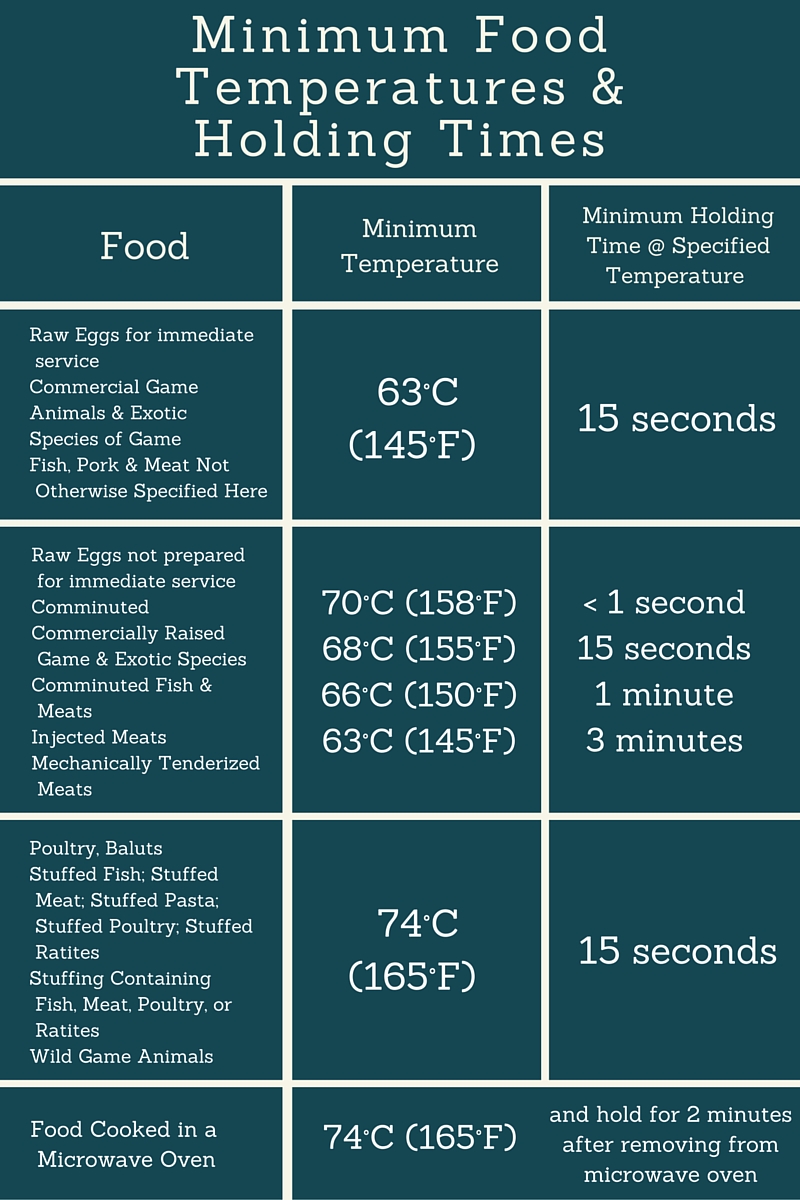
Food Temperature & Tracking Restaurant Technology Guys
Reviewseditor's top picksnovember sales 2024ratings **the maximum cold holding temperature for pasta salad is 41°f (5°c).** pasta salad is a popular dish often served as a side or main course in various events such as. This is the temperature at which bacteria growth slows significantly, helping to prevent foodborne illness. Keeping the pasta salad at this temperature or below helps.

10+ What Is The Maximum Cold Holding Temperature For Pasta Salad
Where should she check the temperature? This temperature range is necessary to prevent the growth of harmful bacteria that can lead to foodborne illnesses. The maximum cold holding temperature allowed for pasta salad is 40 degrees fahrenheit. Food that has been placed in cold holding is kept cold, at or below. In summary, 41°f is the maximum safe cold holding.
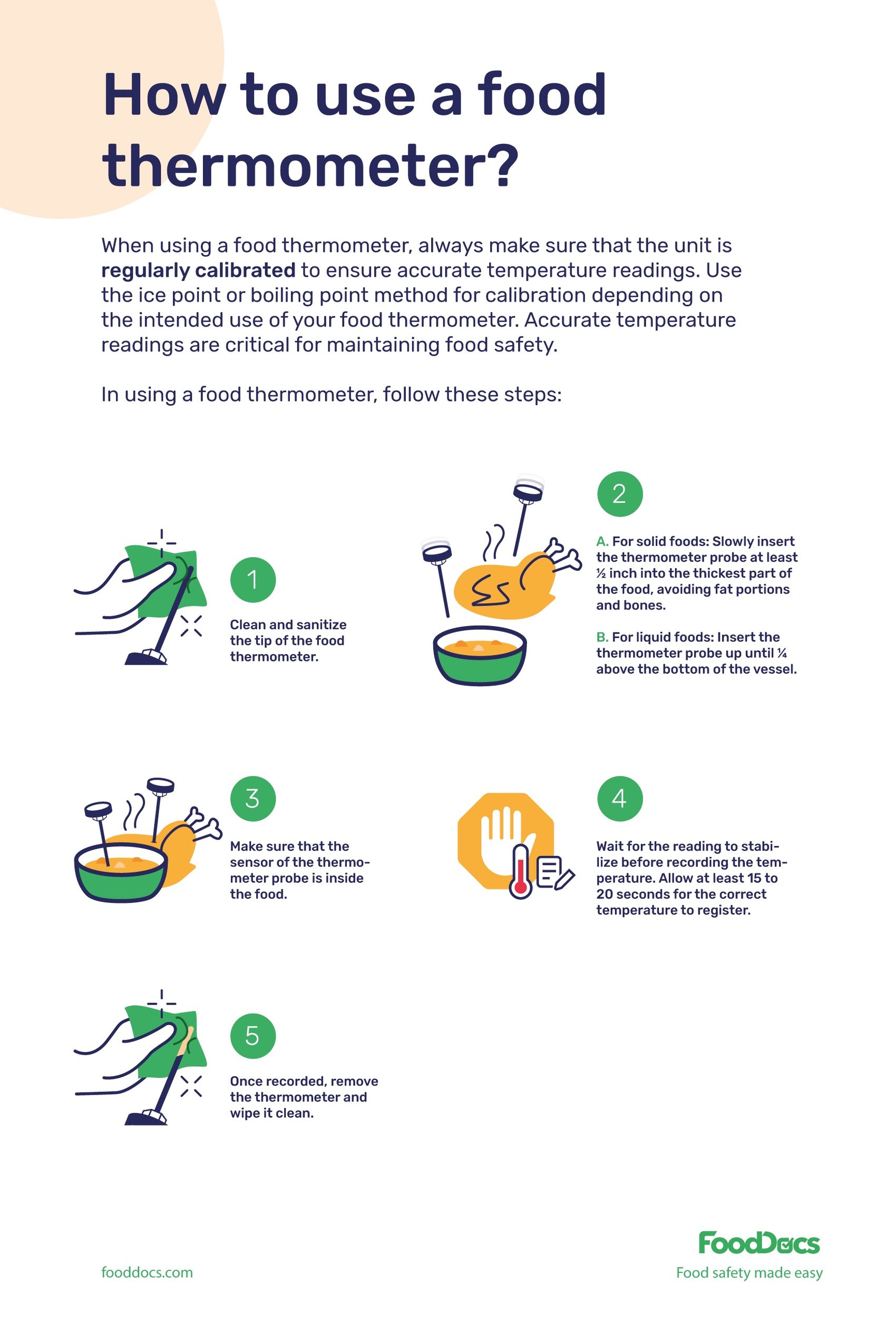
What Is the Maximum Cold Holding Temperature? Temperatures for Specific
Where should she check the temperature? Pasta salad should remain refrigerated in an airtight container at temperatures below 40 degrees. The maximum cold holding temperature for pasta salad should be 41°f (5°c) or below to prevent bacterial growth and ensure food safety. In summary, 41°f is the maximum safe cold holding temperature to maintain the quality and safety of pasta.
The truth is that the idea of quality is deeply rooted in the philosophy of craftsmanship, heritage, and trust, which explains why certain items, often categorized as quality goods, tend to be prized more than others, even when they may come with a higher price tag. It is also important to check the seller’s reputation and read reviews or feedback from previous buyers. Quality goods transcend trends and fleeting fads. Those who are born into privilege have the means to buy their way to the top, while others are left behind, forced to sell their time, energy, and even their dignity in order to survive. They become part of the story of the buyer and the creator, connecting people to a tradition of excellence, heritage, and care. The buying and selling of companies, brands, and even entire industries can reshape economies, alter job markets, and redefine how goods and services are delivered. Are there things that should be kept beyond the realm of trade? Or has the marketplace — with its insatiable demand and promise of exchange — seeped into every facet of our being?
If everything is for sale, then the concept of value itself becomes fluid, subjective, and often manipulated. They remind us that, despite living in a world where everything is for sale, there are some things that remain priceless. Legal experts are often involved at this stage to ensure that the transaction is conducted in compliance with all relevant laws and regulations. We start to treat people as commodities, too — as means to an end, as tools for achieving personal success or social status. Whether it's old furniture that no longer fits with their style, clothing that no longer fits, or electronics they no longer use, selling second-hand items allows individuals to recoup some of the money they spent on these goods. Whether buying vintage clothing, upcycled furniture, or pre-owned electronics, the growing popularity of second-hand shopping reflects a broader desire for more sustainable, creative, and conscious ways of living. Take, for example, a high-quality piece of furniture — a well-crafted sofa or dining table can last for decades if maintained properly. Additionally, brick-and-mortar thrift stores and consignment shops provide a more traditional avenue for selling second-hand goods. Yet, despite this shift, the appeal of quality craftsmanship has not waned. Beyond practical reasons, the appeal of quality goods for sale also lies in the sense of pride and satisfaction that comes from owning something well-made. In fact, there’s been a resurgence of interest in artisanal, locally-made products, especially in industries like fashion, home decor, and food. For environmentally conscious consumers, buying second-hand is not just a cost-effective choice, but a way to make a positive contribution to the planet. Historically, many products were made by local craftsmen, and there was a direct relationship between the creator and the consumer. For some, it’s a matter of balancing budgetary constraints with their desire for quality.
It may have been passed down, carefully preserved, and lovingly maintained. In the end, the phrase “for sale” is about more than just the exchange of money for goods or services. For sellers, online platforms provide a global marketplace, allowing them to reach a wider audience than they would through traditional brick-and-mortar stores. This subjective nature of value is what makes the “for sale” market so dynamic. Legal experts are often involved at this stage to ensure that the transaction is conducted in compliance with all relevant laws and regulations. In times of financial hardship, such as during recessions or periods of high unemployment, more people may turn to second-hand goods as a way to save money. In addition to offering unique items and affordable prices, many second-hand stores also serve an important social and community function. This can be particularly advantageous for entrepreneurs who might have experience in business operations but lack the time or resources to build a new venture from the ground up. The desire for more, the constant pursuit of bigger profits and greater influence, can lead to exploitation. For some, it’s a matter of balancing budgetary constraints with their desire for quality. The appeal of finding a hidden gem, something that has been cherished by someone else and is now available for a new owner, is a part of the allure of second-hand goods. Even objects with little intrinsic value can be sold with great meaning. For sellers, the market for second-hand goods offers an opportunity to declutter their homes and make some extra money. We start to treat people as commodities, too — as means to an end, as tools for achieving personal success or social status. For the buyer, a car offers freedom, mobility, and a chance to create their own story on the road. The ability to share knowledge, ideas, and resources has empowered individuals in ways that were previously unimaginable. It forces us to ask difficult questions about ownership, worth, and the limits of human desire. Online platforms such as eBay, Craigslist, and Facebook Marketplace have made it easier than ever for individuals to sell their unwanted items to a global audience. Some need the money, some want to declutter, and others might feel the urge to let go of possessions as they enter new phases in their lives. After the sale is complete, the buyer assumes responsibility for the business and takes control of its day-to-day operations.